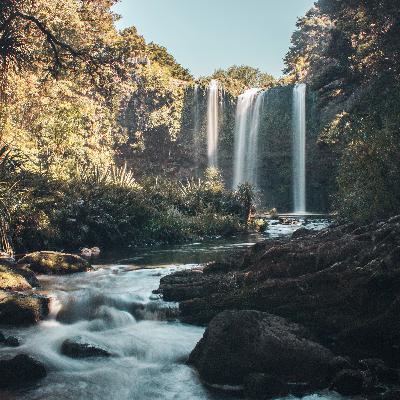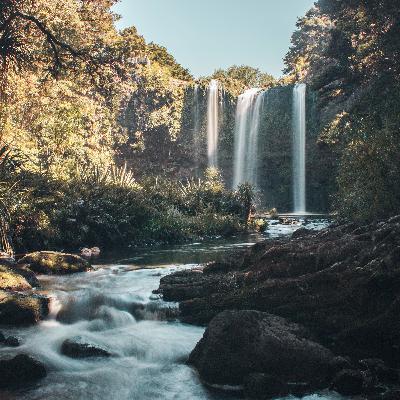Week in review: Northland numbers stable as national numbers rise
Update: 2022-02-14
Description
Let’s look back at the week ending Sunday 13 February 2022.
Listen to the audio version above or read below.
After 87 new Northland cases were reported last week, many of us had a feeling that Northland case numbers would begin to grow rapidly this week.
Fortunately, those feelings didn’t come to fruition, with 81 new cases reported in Northland this week–slightly lower than last weeks total.
Kerikeri saw the highest number of new cases this week with 34, followed by the Whangārei area, who saw 26 new cases.
It’s important to note that Northland District Health Board doesn’t share a tally of where the active cases in our region are located.
Additionally, some days they don’t report many details on the locations of new cases, sharing the districts they’re in rather than towns.
In reality, there were probably quite a few more cases in Kerikeri this week, as on Friday for example, 11 cases were reported in the ‘Mid North’ – this likely includes a few more Kerikeri cases.
There also were a few unexpected wastewater detections of COVID-19 in Northland this week: in Maungatūroto on Friday, February 11, and in Kaeo and Haruru on Saturday, 12 February.
On Thursday, Northland reached the 90% first dose target, months after other DHBs.
Northland was the last region to reach the milestone. Second-to-last was Whanganui, who hit 90% on December 16 last year.
Around 260 Northlanders received their first dose this week, compared to around 360 last week. At the week’s end, 90% of the Northland eligible population, 86% of Māori and 99% of Pacific people have received their first dose.
Meanwhile, over 500 Northlanders received their second dose this week, down from the near 590 second doses administered last week.
4,320 more Northlanders need their second dose for the region to reach 90% fully vaccinated. Currently, 87% of the Northland eligible population, 81% of Māori and 95% of Pacific people are fully vaccinated.
Over 10,100 Northlanders received a booster dose this week, up from around 8,750 booster doses administered last week.
More than 670 children received the paediatric dose this week, down from around 1,070 last week.
COVID-19 made its way into our schools this week–an inevitable that we saw coming.
On Wednesday evening, Whangārei Boys’ High School reported that they had a case in their school community. The next morning, after working with the Ministry of Health and the Ministry of Education, they informed their community that five close contacts had been identified. The case, who was a student, was at school on February 1 and 2.
On Thursday evening, Hikurangi Primary School reported a case at their school. Close contacts were quickly identified and contacted.
That same night, Kerikeri Primary School also reported a positive case in their school.
Since then, second positive cases have been reported at both Hikurangi Primary and Kerikeri Primary.
All schools remain open.
On Friday, Northland District Health Board released some information about Northland Locations of Interest.
“Casual locations of interest are no longer published on the Ministry of Health website due to the large volume of daily new covid cases and locations visited by these new cases.”
“Only high-risk locations of interest are now published, which helps highlight those settings where closer contact exposures may have occurred.”
“We must now be very aware when we are out and about that community transmission of omicron is well established, and that all the usual precautions should be taken when around other people, such as maintaining a distance, wearing a mask (especially if indoors), and trying to limit social gatherings or choosing to meet in smaller groups outdoors instead.”
On Friday, a person who tested positive for COVID-19 reached out to COVID-19 Northland.
They believe they became infected or was infectious while visiting New World Regent, Kmart Whangārei, and Paroa Bay Oysters, Bay of Islands back on January 29 and 31.
These places were not been publicly listed by the Ministry of Health, and there is no direction to get tested or isolate.
Since then, the two New World Regent exposure events seem to have been added as casual contact events in the NZ COVID Tracer App, notifying those who scanned in.
The case has been “battling with public health” over the past week to get their locations published.
They have a mask exemption and were not wearing a mask for some periods while at the above locations.
The case said the shops were extremely busy at the time, and they were “shoulder to shoulder with other customers”.
Nationally, case numbers have started to rise—we’ve seen this coming.
On Wednesday there were 204 new community cases, then 306 on Thursday, 446 on Friday, and 454 on Saturday.
Then on Sunday, the number of new cases almost doubled to 810 new cases.
Next week is going to be big.
Get full access to COVID-19 Northland at covid19northland.substack.com/subscribe
Listen to the audio version above or read below.
After 87 new Northland cases were reported last week, many of us had a feeling that Northland case numbers would begin to grow rapidly this week.
Fortunately, those feelings didn’t come to fruition, with 81 new cases reported in Northland this week–slightly lower than last weeks total.
Kerikeri saw the highest number of new cases this week with 34, followed by the Whangārei area, who saw 26 new cases.
It’s important to note that Northland District Health Board doesn’t share a tally of where the active cases in our region are located.
Additionally, some days they don’t report many details on the locations of new cases, sharing the districts they’re in rather than towns.
In reality, there were probably quite a few more cases in Kerikeri this week, as on Friday for example, 11 cases were reported in the ‘Mid North’ – this likely includes a few more Kerikeri cases.
There also were a few unexpected wastewater detections of COVID-19 in Northland this week: in Maungatūroto on Friday, February 11, and in Kaeo and Haruru on Saturday, 12 February.
On Thursday, Northland reached the 90% first dose target, months after other DHBs.
Northland was the last region to reach the milestone. Second-to-last was Whanganui, who hit 90% on December 16 last year.
Around 260 Northlanders received their first dose this week, compared to around 360 last week. At the week’s end, 90% of the Northland eligible population, 86% of Māori and 99% of Pacific people have received their first dose.
Meanwhile, over 500 Northlanders received their second dose this week, down from the near 590 second doses administered last week.
4,320 more Northlanders need their second dose for the region to reach 90% fully vaccinated. Currently, 87% of the Northland eligible population, 81% of Māori and 95% of Pacific people are fully vaccinated.
Over 10,100 Northlanders received a booster dose this week, up from around 8,750 booster doses administered last week.
More than 670 children received the paediatric dose this week, down from around 1,070 last week.
COVID-19 made its way into our schools this week–an inevitable that we saw coming.
On Wednesday evening, Whangārei Boys’ High School reported that they had a case in their school community. The next morning, after working with the Ministry of Health and the Ministry of Education, they informed their community that five close contacts had been identified. The case, who was a student, was at school on February 1 and 2.
On Thursday evening, Hikurangi Primary School reported a case at their school. Close contacts were quickly identified and contacted.
That same night, Kerikeri Primary School also reported a positive case in their school.
Since then, second positive cases have been reported at both Hikurangi Primary and Kerikeri Primary.
All schools remain open.
On Friday, Northland District Health Board released some information about Northland Locations of Interest.
“Casual locations of interest are no longer published on the Ministry of Health website due to the large volume of daily new covid cases and locations visited by these new cases.”
“Only high-risk locations of interest are now published, which helps highlight those settings where closer contact exposures may have occurred.”
“We must now be very aware when we are out and about that community transmission of omicron is well established, and that all the usual precautions should be taken when around other people, such as maintaining a distance, wearing a mask (especially if indoors), and trying to limit social gatherings or choosing to meet in smaller groups outdoors instead.”
On Friday, a person who tested positive for COVID-19 reached out to COVID-19 Northland.
They believe they became infected or was infectious while visiting New World Regent, Kmart Whangārei, and Paroa Bay Oysters, Bay of Islands back on January 29 and 31.
These places were not been publicly listed by the Ministry of Health, and there is no direction to get tested or isolate.
Since then, the two New World Regent exposure events seem to have been added as casual contact events in the NZ COVID Tracer App, notifying those who scanned in.
The case has been “battling with public health” over the past week to get their locations published.
They have a mask exemption and were not wearing a mask for some periods while at the above locations.
The case said the shops were extremely busy at the time, and they were “shoulder to shoulder with other customers”.
Nationally, case numbers have started to rise—we’ve seen this coming.
On Wednesday there were 204 new community cases, then 306 on Thursday, 446 on Friday, and 454 on Saturday.
Then on Sunday, the number of new cases almost doubled to 810 new cases.
Next week is going to be big.
Get full access to COVID-19 Northland at covid19northland.substack.com/subscribe
Comments
In Channel






